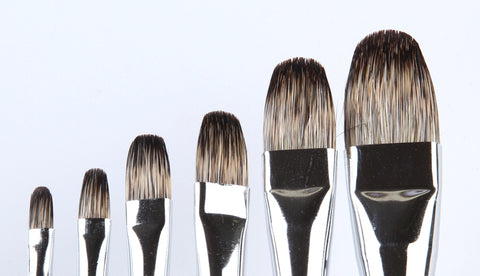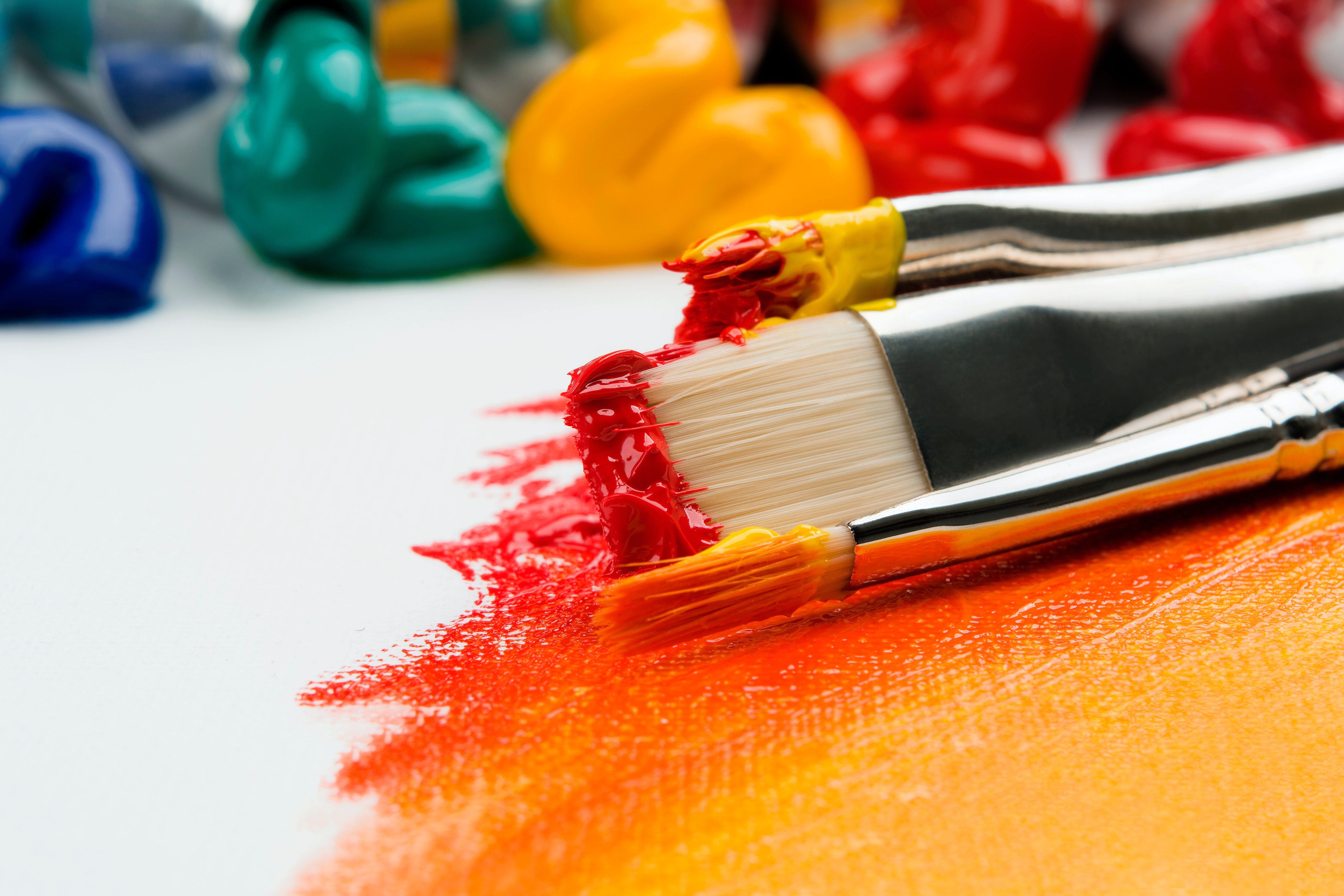There is such an abundance of different hair types used to make paint brushes that selecting the correct brush for your creation can be a confusing task. Each hair type has specific qualities and applies to different techniques and types of paint. This week’s blog aims to clarify the application for each hair type so that you can purchase the best brush for your application.

Natural Hair Brushes
Badger

Badger hair brushes are one of the oldest types of brushes used for Oil painting on canvas. Strands of badger hair are thinner at the base and get wider at the tip giving the brush a “bushy” appearance. This shape allows badger hair brushes to work very well specifically for blending oil paint. Badger hair is more abundant than most other natural hairs used to make brushes and comes from many parts of the world.
Camel Hair

Camel Hair brushes are best suited for watercolour painting and fine lettering brushes. Contrary to what one might think Camel Hair brushes do not in fact contain hair from camels. Camel is a term used for brushes made from squirrel, goat, ox, pony, or a blend of these hairs. Regardless of the composition or specific blend of hairs, camel brushes are always soft brushes intended for thin-bodied media only.

Hog Bristle
Hog Bristle Brushes are an excellent option for both oil and acrylic painting. The thick, coarse nature of hog hair is best suited for medium to thick bodied paints, and therefore will not be effective for watercolour applications. Hog bristles come in a wide variety of quality. The lower quality bristles are often cut blunt at the ends and are used in more economically priced brushes (see photo above, at right). The higher quality bristle brushes will have a smooth tapered tip/edge (see photo below).
One of the features that makes hog bristles unique to other animal hairs is a natural arc to the hair shaft and split ("flagged") ends. When curved hog hairs are grouped together in a brush, the microscopic gaps between the bristles hold the paint and act like a funnel, allowing you to deliver smooth and even applications of paint. The flagged ends allow thick paint to be laid down smoothly, maximizing control of heavy body paint and minimizing coarse brush strokes.
Kolinsky Sable

Kolinsky Sable brushes are a professional quality brush used for both oil and watercolour painting. These highly sought-after brushes are amazingly strong, springy, and have the ability to hold their shape over time. Kolinsky sable brushes hold an amazing amount of paint and will maintain a very fine point or edge even when loaded with paint. Kolinsky Sable hair comes from the tail hairs of a certain type of marten (mink-like weasel) that is found in Russia, Ukraine, and Northern China. These brushes are considered some of the finest quality for oil and watercolour painting, and will last a long time when properly cared for.
Other Sables
Black Sable: a marten, also from North Eastern Europe, known for its luxuriously soft black and silver hairs. Black sable grow thicker, stronger hair than Kolinsky sable, making them an ideal hair for blending and glazing with oils.

Red Sable: refers to other members of the marten family that can be found in the Ukraine and Romania that have a reddish coat; the hairs from these animals are marketed as red sable and are sought after by watercolourists for their absorbency and resilience.
Red sable brushes are made in a variety of qualities, but in general red sable is a strong hair that holds a decent point. Red sable hair comes from several members of the weasel family who have red hair. A high quality red sable brush is considered an excellent alternative to the much more expensive Kolinsky Sable brush. Sometimes a brush can be made from a combination of red sable hair with ox hair. This creates a more economical option, however the added ox hair does not allow the brush to hold a fine point.
Ox Hair

Ox Hair brushes are used for watercolour painting and work especially well for the application of watercolour washes. The hair to make these brushes comes from the ears of oxen or cattle. The nature of ox hair is strong and durable like the animal it comes from, and maintains the shape of the brush well. Ox hair has a soft texture that is not effective at maintaining a fine point. It is quite common for a brush to be made of a combination of ox hair with other natural hairs to increase the versatility of the brush.
Pony Hair

Brushes made from pony hair are used for acrylic, watercolour, or tempera painting. The hairs are supple while still being strong and resilient. These brushes are often sold as an inexpensive option for beginners or for little ones to get creative with. Pony hair is often blended with other natural hairs to create inexpensive watercolour brushes. Pony hair brushes can be poofy and do not hold a point well at all.
Squirrel

There are two types of squirrel whose hair is commonly used in brush making. Both types make brushes that are used for watercolour painting and lettering. The Grey squirrel (Talayoutky) is from Russia, and the hair is used to create very long liners, lettering brushes and quills. There is a high level of demand for this type of brush and it has unfortunately fallen into short supply. The Brown Squirrel (Kazan) is more abundant than the Grey and is considered mid-range in terms of quality. This hair is taken from the squirrels tail and is very thin and fine in nature. The downfall is that squirrel hair is not very strong and will not readily maintain its shape when loaded with paint. For this reason, it's most effective when used with inks, watercolours and other very fluid paints.
Synthetic Hair Brushes

Synthetic hair brushes are the most versatile and can be used for all mediums. Synthetics make particularly effective brushes for acrylic paint. The hairs are man-made using polyester or nylon filaments commonly called “Taklon”. Synthetic hairs can be engineered to increase colour carrying ability, absorbency, or to soften the texture of the hair to recreate the unique qualities of natural hairs.

Synthetic brushes offer some advantages over natural hair brushes depending on the application:

- Animal hairs naturally have a scaly surface (microscopically) which traps paint and makes the hairs hard to keep clean. Synthetic hairs are smooth so they do not trap paint and are easier to keep clean.
- Synthetic hairs are stronger and more resilient in nature making them less likely to break. The strength of synthetic fibers also make them suitable for use on almost all surfaces; from rusty metal, to concrete, to rice paper.
- Synthetic hairs are more resistant to drying and damage from solvents
- Synthetics just generally stand up to the wear and tear of painting and cleansing better than a natural hair, maintaining their initial shape and a sharp edge for a much longer period of time
Hopefully this brief outline will be a helpful tool for finding the right brush for your next creation!






